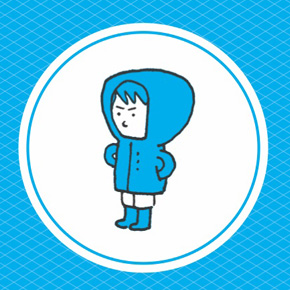In the life of every bibliophile-parent, there comes a moment when each new children’s book begins to seem very much like the last. A blurry train of flat narratives skim past one’s eyes, filled with stock characters, stale language, and an all-too-familiar anodyne tone. Yes, there are brilliant books that stand out, and these are worth reading and re-reading. But there is also a sameness that suffuses English-language books for young people, a shared set of narrative tools and assumptions.
And when all the books have hammers, then all the children come to look as though they have rather flat heads.
Those who have multiple book-devouring children—I have three—often reach a wall with English-language books for young people. Children read much more voraciously than do adults, and their appetites for the new can be terrifying. (Their appetites for re-reading the Lord of the Rings trilogy can also be terrifying.) Feeding them books written in a different era, or intended for adults, can create more variety. Encouraging them to read in a second or third language is good. But even so, the beast remains ever-hungry.
Publisher Adam Freudenheim also ran into trouble feeding this beast, according to his partner at Pushkin Press, Stephanie Seegmuller. It was only two years ago that the pair bought the press in order to bring English-reading adults more books from around the world. Soon after, Freudenheim and Seegmuller decided they could do the same for English-reading children.
Their decision raised some eyebrows. Generally, one doesn’t expect an Archipelago or a New Directions to come out with a line of books for children. After all, literary translations are complicated stuff! And don’t English-reading children prefer processed cheese, Disney characters, and saccharine happy endings?
In any case, Seegmuller doesn’t expect English-reading children to care that they’re reading a translation. Whether a book was originally written in Xhosa or Czech or English makes little difference to a child-reader. “It’s not fair to expect children to be interested on the sole ground that it’s foreign.”
But it is fair to expect that some child-readers have a taste for the new and different, particularly when it’s good. Seegmuller said that Tonke Dragt’s The Letter for The King, trans. Laura Watkinson, has already “proven our point” in launching the children’s imprint. The book has gotten excellent reviews and has sold out. But more than that, it offers child-readers something different:
“Looking at other cultures, you can see a way of telling a very good story can be different.”
I found this particularly true when I read my five-year-old Colas Gutman’s The Pointless Leopard, trans. Seegmuller and published by Pushkin. My son isn’t yet accustomed to articulating what he appreciates about a book (beyond like and dislike), but I was immediately struck by the book’s tone, which is very different from most English-language children’s books for children five to eight.
The titular Leonard goes off walking in the countryside. He gets lost, is teased by various animals, called a “pointless leopard,” and nearly eaten. He’s also completely forgotten about by his napping parents.
My five-year-old was not at all terrified. Instead, he found the book funny.
This is “a book that is extremely successful in France,” Seegmuller said. There, its tone is not considered unusual. “There is always a bit of a grating, ironical element [in French children’s books] so that the adult who reads it will chuckle. It’s short stories for people who are seven years old, but there are also things that only an adult could understand. And that’s very much in the French children’s book tradition. It’s okay—it’s even encouraged.”
One blogger who moved from the UK to France, Jenny Colgan, has written about the (shocking) difference between French and English children’s books. Colgan told the Guardian, “I don’t know why so many French children’s books are so bafflingly, needlessly frightening.”
And this is only France: a country separated from England by just twenty-one miles of water. There are many other things for child-readers to discover in other narrative, artistic, and poetic traditions.
Now, I am not suggesting that children should only read “good” or “literary” books. There is no way to avoid the zillions of cardboard cutout narratives in which our English-language libraries are awash. A diet that includes a number of ugly books is just fine. Moreover, it’s necessary: themes and plots that are tooth-grindingly, hair-pullingly dreary for us grown-ups are often new for children.
So kids will read bad books. That’s fine, we agree. And even if we don’t, there’s nothing for it but locking them in a tower, and Disney has already let us know that this creates a whole new set of problems. The trick is, then, having not only bad books around the house, nor just one kind of good book. It’s in variety that we find our readerly selves and construct our own narratives.
For this variety, we need translation.
*****
M. Lynx Qualey lives with three child-readers of ever-increasing ages. She has a particular love for Arabic children’s literature, but is broadly interested in how narratives for children are shaped around the world. She blogs daily at http://www.arablit.org.

